*By Linden Hill
Dance is like a living thing. You can’t force it, you can’t catch it. You have to make yourself aware and it will come to you. And the complexities which arise will not overwhelm you. They will only inform you. Just that. And you learn every time.
– William Forsythe[1]
The fleeting nature of dance is both a blessing and a curse. Knowing that dance works are ephemeral gives dancers and choreographers a freedom of experimentation; it is liberating to know that whatever happens during the performance might disappear once it is finished. On the other hand, how are future dancers and scholars able to analyze these dance works if we allow them to vanish? With an aim to preserve choreographic works, a number of methodologies of dance notation have existed for centuries. Most widely known, Rudolph van Laban’s theory of Labanotation is a written system for recording and analyzing human movement. Other platforms exist, including reconstructions through video, oral history, and “restorers.”[2] Though these platforms are certainly suitable for more traditionally codified dance forms, once we shift into the realm of post-modern contemporary dance, [3] where all boundaries are broken, it is much more difficult to find an effective way to document, archive, and ensure the passing down of this body of choreographic work. These types of dance pieces cannot be reduced to a shared, written notation. Choreographers and dancers alike understand the urgency to document these ephemeral works, some of which are singular events rather than a series of repeated performances. It is crucial, therefore, to resist freezing dance performances to a singular instantiation, but simultaneously allow for fluid discourse to continue into the future.
This article explores two distinct, yet complementary notions: the idea of documentation as performance and the idea of the body as archive, using William Forsythe’s Motion Bank[4] as a case study. Before going into an analysis of these two concepts, it is important to have a brief background on Motion Bank and the choreographers involved in it. American, Frankfurt-based choreographer William Forsythe is a pioneer in facilitating collaborations between choreographers, graphic designers, and digital technicians, which allows for a complex exploration of the choreographic process. In his Motion Bank platform, Forsythe presents choreography as online visual data. In doing so, he acknowledges the transience of dance and creates what he calls “choreographic objects,” which are “models of potential transition from one state to another in any space imaginable.”[5] His choreographic objects are also a form of dance documentation and they have the potential to open up a range of phenomenological investigations.
For the continually expanding Motion Bank library, Forsythe plans to collaborate with choreographers who work in a variety of movement idioms. This article focuses on one iteration, American choreographer Deborah Hay’s solo No Time to Fly. In addition to briefly touring with Merce Cunningham’s company, Hay was a member of Robert Dunn’s composition class, presented her work at the earliest Judson Dance Theater performances, and participated in other collaborative events including Robert Rauschenberg’s “Nine Evenings: Theater and Engineering.” From early on, Hay, whose works have been described as being “more like rituals than concerts,”[6] limited the number of personal decisions made by herself (as the choreographer) and preferred to give the dancers more agency. It is unsurprising, therefore, that Hay’s practice largely revolves around score-based solos. These pieces consist of Hay (either orally or through written text) giving her dancers broad, yet highly specific cerebral images as scores. She frequently frames her scores in the form of “What if” questions like “What if every cell in the body had the potential to get what it needs, while surrendering the habit of a singular facing, and inviting being seen?”[7] The goal is not for the dancer to “arrive at an answer,”[8] but rather to notice the possibilities and potential for movement outside of one’s habitual movement comfort zone. Hay divides her questions into three categories: (1) the unanswerable, (2) impossible to truly comprehend, and at the same time, (3) poignantly immediate.[9] These questions open up the possibility of non-linearity in movement, which would require dancers to notice feedback on the body as they are performing the solo. The dancers are not expected to repeat the same exact solo in each instantiation; rather they occupy the same present as their audience. Hay’s aesthetic aim is to challenge her dancers to “re-choreograph her perceived relationship to herself, the audience, space, [and] time”[10] through a heightened cellular consciousness. Hay uses language as an object that lends itself to the creation of both movement and a physical environment; in this way, the performance informs the process.
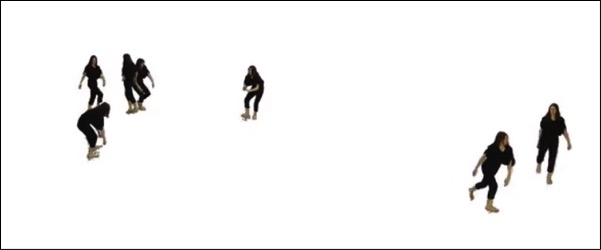
Figure 1: All seven of Juliette Mapp’s recordings of No Time to Fly overlaid
For No Time to Fly, written in 2010 and recorded in Frankfurt in April 2011, three dancers, Jeanine Durning, Juliette Mapp, and Ros Warby, each performed Hay’s score-based solo seven times. Among the many layers of material one could explore, the online Motion Bank gives users the option to watch each dancer’s recorded dance performance side-by-side with Deborah Hay’s written score, read the dancer’s written notes and responses alongside Hay’s score, listen to interviews with Hay and her dancers, and look at a variety of movement diagrams, which translate the dancers’ movement paths into two-dimensional pictorial scores. Users also have the opportunity to control time by pausing or restarting the videos. There is no prescribed path of using the Motion Bank.
“What if” No Time to Fly was both autographic and allographic?
A discussion of the identity of No Time to Fly goes in tandem with a discussion of documentation as performance. The most effective way to analyze this piece is to divide it into three sections: (1) Hay’s written score, (2) the individual performances of each dancer, and (3) the movement scores depicted in the form of pictorial movement paths. Hay’s written score is autographic; she is its sole author. The performance of the score, however, is allographic. Each dancer has the agency to respond to the instructions according to her own interpretation of Hay’s text. We cannot trace the choreography to an “original moment” because the movements that a viewer would witness occur as the performer responds to the feedback from her own body resulting from the score’s instruction in that particular moment of the performance. Hay intentionally complicates the viewing experience by creating a score in which she claims, “No one moment, no one single meaning, movement, image, character, [or] emotion exists long enough for either the dancer or an audience member to identify what the dancer is ‘doing.’”[11]
The discussion of No Time to Fly’s constituent parts becomes more tangled by the subsequent visualization of the dancer’s performed movement paths in pictorial form, which become like a second score. Analyzed from one perspective, the visualization can be interpreted as autographic because one can trace each movement score to a specific iteration by an individual dancer; the drawing derives from her own physical movements. Additionally, the movement score could be read as autographic on the part of the graphic designer who translated the movement to a visual score, which could potentially exist independently as a work of art. Without the designer’s activation, this new score would not exist in a pictorial form. The after-drawings transpose Hay’s score into an entirely new medium. In the Cagean sense, the score becomes a work of art— except in this case, these scores are produced after the performance. From another point of view, however, we could see the movement score as allographic as well, taking into account the element of chance that is inherent in the creation of the movement path. In Nelson Goodman’s discussion of scores and notation, he explains that, “a score, whether or not ever used as a guide for a performance, has as a primary function the authoritative identification of a work from performance to performance.”[12] The No Time to Fly movement score complicates Goodman’s assertion that “the function of a score is to specify the essential properties a performance must have to belong to the work”[13] because each of these scores (for each individual dancer’s seven iterations of the performance) has different properties, yet each is an “authentic” rendition of No Time to Fly. Simply because one dancer interpreted one of Hay’s instructions in a manner vastly different than another does not make it any less “authentic.”
In this case, therefore, the pictorial score is a visualization of the allographicity of the dancer’s performance. This visualization cannot be attributed to a singular author, yet much of its genesis is from a singular body and the decisions that particular body made in a specific time and space. Ultimately, this three-part organization illustrates scholar Rebecca Schneider’s argument of the “solo working against its own singular status.”[14] There is no single solo, single author, or single performance; rather, No Time to Fly is an accumulation of adaptations. The solo cannot be distilled down to “essential properties,” unless one considers the “essential property” to be the dancer responding to the feedback on her own body without hesitation as she follows Hay’s instructions. As a whole, No Time to Fly exhibits qualities of both allographicity and autographicity. The subsequent documentation of the piece, therefore, allows for a fluidity of interpretations.
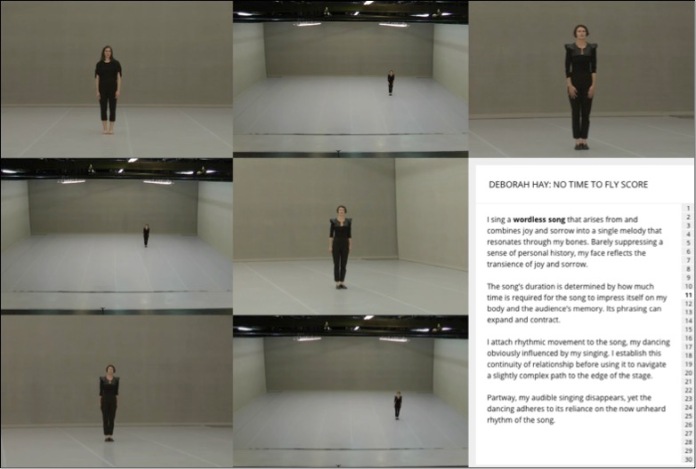
Figure 2: Six recordings of No Time to Fly with Deborah Hay’s score at right
“What if” the documentation of No Time to Fly functioned as performance?
With these ideas about authenticity in mind, the focus can shift to a discussion of documentation. How do we document these fleeting danceworks, while still staying truthful to the spirit of the work? Peggy Phelan’s contested notion about the temporality of performance argues that performance can only be perceived in the present; once it moves past its initial moment of appearance, it is no longer the same work.”[15] Many scholars have responded to this charged statement, including Schneider and Amelia Jones,[16] but Christopher Bedford’s notion of the “viral ontology of performance” is especially captivating for this study. He argues that,
There is no performance outside its discourse. […] A given performance…splinters, mutates, and multiplies over time in the hands of various critical constituencies in a variety of media, to yield a body of critical work that extends the primary act of the performance into the indefinite future through reproduction. This approach in turn forces us to relinquish our attachment to the performance as primary act and instead submit to the notion that the object of performance art is in fact a long, variegated trace history that begins with the performance, but whose manifestations may extend, theoretically to infinity.[17]
We must divorce ourselves from trying to locate a singular “object” of the dance performance that begins and ends with the physical manifestation of choreographed movement. Rather, it is more productive to see dance performance on a larger space/time continuum. Deborah Hay believes that “Performance as practice suggests…that there can be more to the moment than just ‘being’ in it.”[18] “Being in it” is not just the physical performance of the movement, but also includes what happened before (the writing of the score) and after (the creation of the drawings), as well as all of the afterlives and permutations of No Time to Fly that could materialize in the future.
No Time to Fly, as recorded in the Motion Bank, is a clear example of both this type of “viral ontology of performance” and documentation as performance. That is, the act of documenting the dancer’s performances and the subsequent creation of the movement scores is its own type of performance. Philip Auslander writes at length about the performativity of documentation: “The act of documenting an event as a performance is what constitutes it as such. Documentation does not simply generate images and statements that describe an autonomous performance: it produces an event as a performance and, as Frazer Ward suggests, the performer as ‘artist.’”[19] This notion would not necessarily apply to No Time to Fly if it were performed in a typical proscenium theater setting, but because it was performed specifically for the Motion Bank, it is a performance of the act of documentation. This process of documentation offers a more complex knowledge of the dance piece than what would be afforded in a traditional performance setting. While an audience member sitting in the theater can be more-or-less neutral in her interaction with performed piece, the Motion Bank No Time to Fly viewer inherently has control over her experience. The Motion Bank viewer can control the work by suspending or manipulating time, and investigate the piece on her own. The possibility of fast-forwarding, rewinding, or repeating time gives the viewer the power to direct her own experience with the documentation. This philosophy aligns with Deborah Hay’s beliefs about giving the dancer more agency, rather than forcing her to realize a pre-conceived piece of choreography. In this documentation as performance, the viewer, too, can make decisions about how they interact with the dance. No two viewers will see the solo in the same manner.
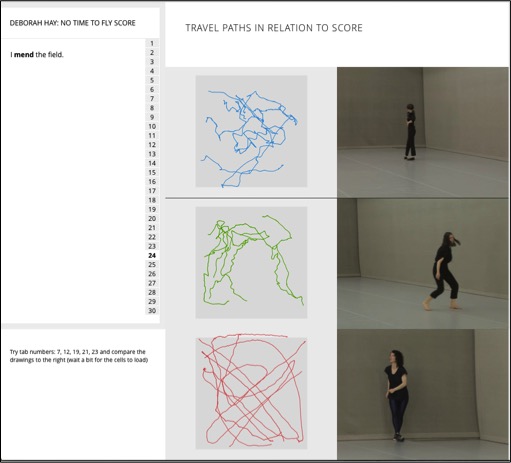
Figure 3: Ros Warby, Juliette Mapp, and Jeanine Durning’s travel paths in relation to Deborah Hay’s score
In this way, No Time to Fly does not reject objecthood and finds an alternative solution to the paradox of immateriality versus the inherent desire to preserve. Documentation in the Motion Bank allows for multi-dimensional, intersubjective engagement with the dance material. As Auslander claims, “It may well be that our sense of the presence, power, and authenticity of these pieces derives not from treating the document as an indexical access point to past events but from perceiving the document itself as a performance that directly relates to an artist’s aesthetic project or sensibility and for which we are the present audience.”[20] By giving this virtual audience member agency in their present, the feeling of a performance is maintained. There is still a “liveness” that would be lacking if one watched a regular video recording of the work. The Motion Bank erases the privilege typically offered to live performance and instead places value in the act of documentation. As Amelia Jones articulates, “While the live situation may enable the phenomenological relations of flesh-to-flesh engagement, the documentary exchange (viewer/reader –– document) is equally intersubjective.”[21] Forsythe’s platform exemplifies the potential for rich, engaging, complex relations between a viewer and the document.
The question remains: on what level do we engage with this digital information? Unlike other forms of dance notation, the Motion Bank is not necessarily about being able to reenact No Time to Fly in the future. Because the piece is score-based, the recorded generated movement is individualized to a specific dancer in a specific space, time, and relation to her body. It would not make sense to learn the movements from one of these videos and copy another dancer’s movement. If a dancer had an interest in performing No Time to Fly, she could obtain a copy of the score online.[22] The Motion Bank, rather, is available for anyone who seeks to learn more about the choreographic process. Removing dance from a typical performance setting broadens the audience demographic to include those outside the dance community. Allowing more people from a variety of backgrounds and disciplines to interact with and think critically about dance performance, the Motion Bank may instigate new conversations on the art of dance.
“What if” the Body became an Archive?
Forsythe’s digital information is a multi-dimensional approach to the documentation of dance and adds to the ever-expanding archive of No Time to Fly. However, the physical, live, human aspect of dance cannot be fully accounted for in this medium. I propose an idea external to the Motion Bank: a more thorough investigation of the body as archive.[23] Instead of trying to access information about a dance work through external “objects,” why not look to the instrument of production itself: the body? Learning about dance through solely watching a video or reading written documents is not sufficient for a well-rounded understanding of a dancework; rather, experiential learning must be included in the process of accessing any form of a dance archive. A dancer’s body stores information worthy of analysis that is unobtainable through other measures except through direct interaction with the body of that dancer. By communicating with a dancer on a human level, layers of knowledge that make up the identity of a given dancework can be revealed, layers that a dancer would be able to extrapolate from her body through the disciplined practice of performing, but wouldn’t ordinarily be visible to a viewer. From physical reenactments to oral histories, this knowledge could be approached through a variety of means, making it accessible to dancers and non-dancers alike.
Scholars in a variety of disciplines have been exploring the notion of embodied knowledge. In his work The Tacit Dimension, scientist and philosopher Michael Polanyi argues, “we know more than we can tell.”[24] He believes the entire extent of our knowledge cannot be articulated verbally; rather, it revolves in a more virtual sphere. Because of this intangibility of knowledge, he favors the notion of transmission of this tacit knowledge through personal contact rather than through written document. In a similar vein, sociologist Richard Sennett traces the idea of skills beginning as a bodily practice.[25] Although his work focuses on practices that fall into the realm of “craft,” he highlights the vacant “gap that can exist between instructive language and the body,”[26] which helps illustrate the argument for an archive that includes the bodily dimension in order to help close that gap. In the bodily archive, the personal and human aspect needs to be complemented (but not replaced by) written documents. There must be balance between the imaginative and expansive virtual sphere and the framed context of a document.
In recent years, a number of scholars in the realms of time-based media and performance studies have also begun debating issues related to an archive dissociated from tangibility. As scholar Hanna Hölling articulates, “Archives are more than physical repositories. Archives exist on another intangible, non-palpable, and non-physical level of being, which is not as many suggest, metaphorical, absent, and conceptual; rather, […] is virtual and real.[27] The bodily archive simultaneously breaks down the fetishization of the tangible archival object and gives the dancers greater agency in the afterlives of the performance. Rebecca Schneider explains that, “When we approach performance not as that which disappears (as the archive expects), but as both the act of remaining and a means of re-appearance and ‘reparticipation’ (though not a metaphysic of presence) we are almost immediately forced to admit that remains do not have to be isolated to the document, to the object, to bone versus flesh.”[28] Even though we are drawn to the tangible thingness of an archive or document, movement-based art does not always lend itself to a wealth of physical remains. The thingness cannot be separated from the human body; it resides within the dancer. André Lepecki, a performance studies scholar, has done a thorough analysis of the body as archive. He proposes a “‘will to archive’ as referring to a capacity to identify in a past work still non-exhausted creative fields.”[29] For Lepecki, the end of a performance is the new beginning of a dance’s afterlife, which permits the work to undergo numerous permutations and manifestations. He continues, “The archive as border becomes the vertiginous skin where all sorts of onto-political ‘rewritings’ take place, including the re-writing of movement, including the re-writing of the archive itself.”[30] Here, Lepecki refers primarily to the notion of being able to access or enter the bodily archive through re-enactment of a choreographic work. Lepecki’s idea of porousness within the dance archive and focus on the living dancer as a carrier of the archive, which can then be shared with others is especially poignant.
As a dancer performs or studies the work of various choreographers, her body creates a “lineage machine,”[31] which sustains both Hay’s movement and her overall aesthetic principles in the dancer’s subsequent practice. Deborah Hay hopes to “loosen the tyranny of the myth of the dancer as a single coherent being. [Her] vision of the dancer, through the intervention of performance as practice, is a conscious flow of multiple perceptual occurrences unfolding continuously.”[32] Hay’s notion coincides with the idea of an active bodily archive. It is unrealistic for this archive to be immaculately in order; rather messiness and imaginativeness should be acceptable, as well as the understanding that this archive will inevitably change over time. In documentation and archiving, the focus can largely rest on the “author.” In the case of dance, the choreographer is usually given this idealized status. However, since dancers other than the choreographer are frequently the ones who embody the choreographer’s vision, their embodied knowledge must be taken into account when discussing the afterlife of a given dancework. Amelia Jones claims that the body “is not self-sufficient in its meaningfulness, but relies not only on an authorial context or ‘signature’ but on a receptive context in which the interpreter or viewer may interact with this body.”[33] Jones’s “receptive context” could take the form of the bodily archive that physically interacts with future generations of dancers or interpreters.
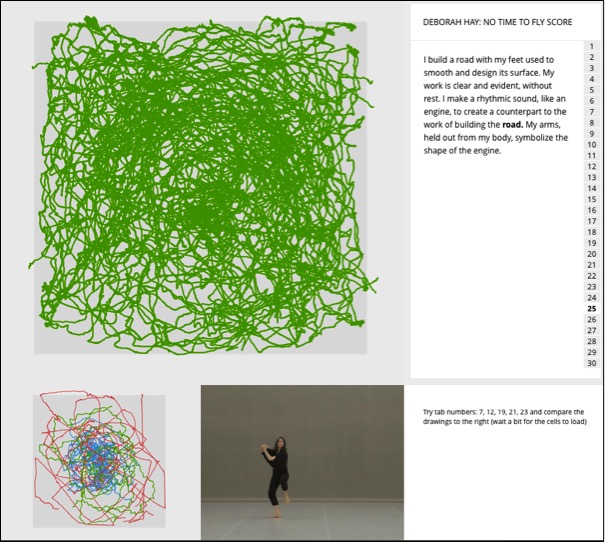
FIGURE 3 – Figure 3: Ros Warby, Juliette Mapp, and Jeanine Durning’s travel paths in relation to Deborah Hay’s score
Does No Time to Fly infiltrate the dancer’s later performances, even if they are by a different choreographer? Jane Blocker articulates, “If one body in performance transmits an earlier performance by another body, but does so unintentionally or unknowingly, can it still be said to function as an archive of that earlier action?” [34] The Motion Bank participants are all choreographers in their own right and perform in the works of other choreographers; consequently, they perpetuate Deborah Hay’s No Time to Fly as it exists in residual form in their bodies. Perhaps it is not the same degree or intensity of performance as exists in the Motion Bank or through other archival instantiations, however, in terms of the virtual bodily archive, even if unintentionally, the bodily residually carries with it the remains of performances past. With Deborah Hay’s dancers, this residue is more conceptual and exists in the heightened bodily awareness a dancer brings to her movement.
Effective dance documentation requires a multi-layered approach, resulting in collaborations with experts in a range of fields. William Forsythe’s Motion Bank technology is extremely rich and, when used in conjunction with a bodily archive, it can allow for future generations to interact with the ephemeral category of dance in order to better understand its process. Issues with this technology include cost, the documentation of site-specific performances, and spontaneously occurring performances. The Motion Bank is an open-ended entity. At this point, it is unclear whether the Motion Bank methodology can be universalized to encompass the entire ever-expanding category of “dance,” but it will be intriguing to see, as new Motion Bank websites are released, how Forsythe deals with these same issues with choreographers of different styles.
*Linden Hill graduated cum laude from Barnard College, where she studied art history, dance, and French literature. She is completing her MA at the Bard Graduate Center, where her interdisciplinary research combines twentieth-century fashion history, dance history, and gender studies.
[1] William Forsythe quoted in Johannes Odenthal, “A Conversation with William Forsythe on the Occasion of the ‘As a Garden in This Setting’ Premiere, December 1, 1993,” Ballett International/Tanz Aktuell 2 (February 1994), 36.
[2] For a thorough discussion of dance notation see Ann Hutchinson Guest, Choreo-Graphics: A Comparison of Dance Notation Systems from the Fifteenth Century to the Present (London: Routledge, 1998).
[3] In this paper, I will use the term “post-modern dance” to refer to those dance idioms that flourished with the Judson Dance Theater in the early 1960s. The term “contemporary post-modern” will refer to more recent dance works whose choreographers’ ideologies draw from those from the Judson Dance Theater.
[4] William Forsythe’s Motion Bank website: http://scores.motionbank.org/dh/#set/sets
[5] William Forsythe, “Choreographic Objects,” http://www.williamforsythe.de/essay.html
[6] Susan Leigh Foster, Reading Dance: Composing the Choreographer, the Dancer, and the Viewer (Berkley and Los Angeles: University of California Press, 1986), 6.
[7] Goldman, 164
[8] Danielle Goldman, Deborah Hay’s O, O, TDR 51, no. 2 (Summer 2007), 164.
[9] Deborah Hay, “How Do I Recognize My Choreography?” 2007, http://www.deborahhay.com/Notes_how_do_I.html
[10] Hay, “How do I realize my Choreography?” 2007
[11] Deborah Hay, “A Continuity of Discontinuity: Readings about Non-Linear Learning” lecture at Tanzkongress, June 7, 2013.
[12] Nelson Goodman, Languages of Art: An Approach to a Theory of Symbols (Indianapolis and Cambridge: Hackett Publishing Company, Inc., 1976), 128.
[13] Ibid., 212.
[14] Rebecca Schneider “Solo, Solo, Solo” in After Criticism: New Responses to Art and Performance ed. Gavin Butt (Oxford: Blackwell Publishing, 2005), 36.
[15] Peggy Phelan, Unmarked: The Politics of Performance (London and New York: Routledge, 1993), 146.
[16] See Amelia Jones, “’Presence’ in Absentia: Experience Performance as Documentation,” Art Journal 56, no. 4 (Winter 1997).
[17] Christopher Bedford, “The Viral Ontology of Performance” in Perform, Repeat, Record: Live Art in History. Ed. Amelia Jones and Adrian Heathfield (Chicago: The University of Chicago Press, 2012), 78.
[18] Hay, “Performance as Practice” http://www.deborahhay.com/Notes_Performance_as.html
[19] Philip Auslander, “The Performativity of Performance Documentation” Performing Arts Journal 84 (2006), 5.
[20] Auslander, 9.
[21] Amelia Jones, “’Presence’ in Absentia: Experience Performance as Documentation,” Art Journal 56, no. 4 (Winter 1997), 12.
[22] William Forsythe does, however, have additional projects that I think could be more useful if someone wanted to reconstruct one of his dance works, such as his Synchronous Objects (2009) digital platform documents his work One Flat Thing, reproduced (2000): http://synchronousobjects.osu.edu.
[23] See Andre Lepecki, “The Body As Archive: The Will to Re-Enact and the Afterlives of Dances,” Dance Research Journal 42, no 2 (Winter, 2010): 28-48.
[24] Michael Polanyi, The Tacit Dimension (Chicago: The University of Chicago Press, 1966), 4.
[25] Richard Sennett, The Craftsman (New Haven and London: Yale University Press, 2008), 10.
[26] Ibid., 179.
[27] Hanna Hölling, Re:PAIK. On Time, Changeability and Identity in the Conservation of Nam June Paik’s Multimedia Installations, Ph.D thesis (University of Amsterdam, 2013), 232.
[28] Rebecca Schneider “Performance Remains” in Perform, Repeat, Record, 142
[29] Andre Lepecki, “The Body As Archive: The Will to Re-Enact and the Afterlives of Dances,” 31.
[30] Ibid., 38.
[31] Schneider, quoted in Jane Blocker, “Repetition A Skill which Unravels,” in Perform, Repeat, Record, 199.
[32] Deborah Hay, “Performance as Practice.”
[33] Jones, 14.
[34] Jane Blocker, “Repetition: A Skill which Unravels,” in Perform, Repeat, Record, 199.



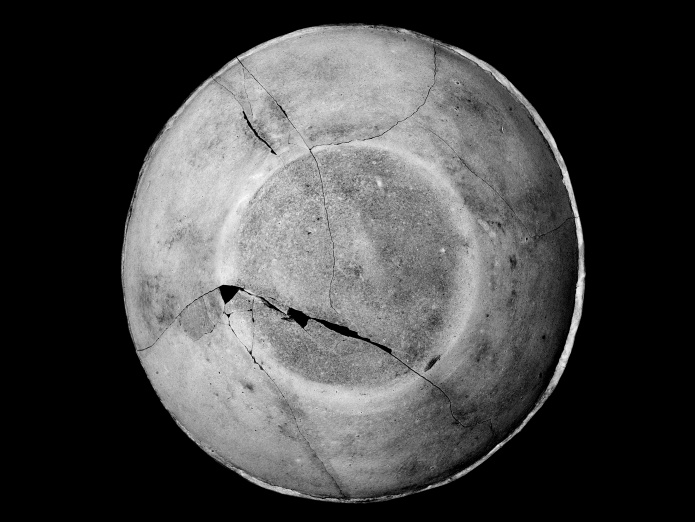
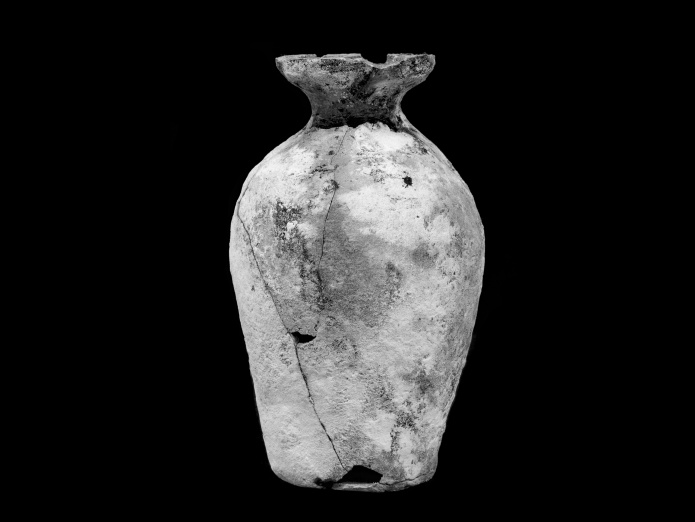
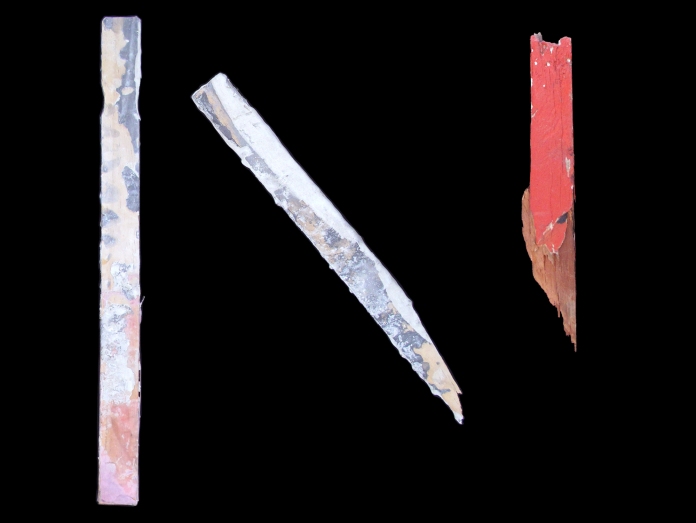
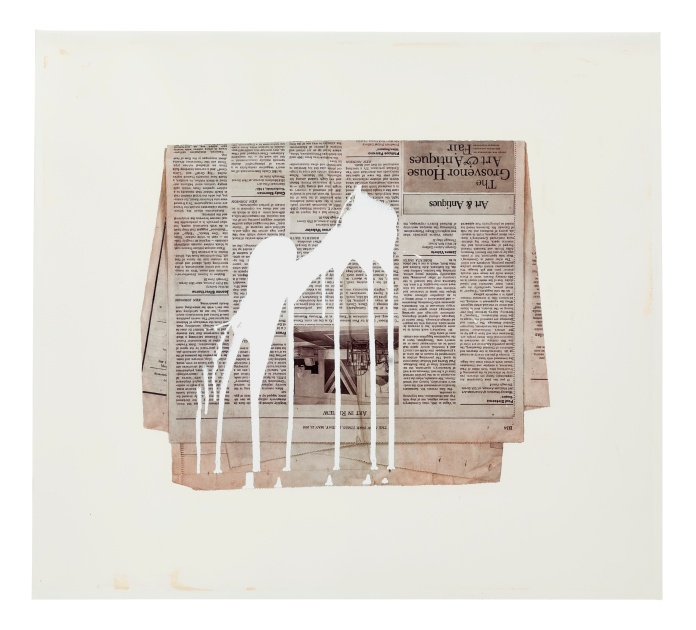

![Dieter Roth, P.O.TH.A.A.VFB (Portrait of the artist as a Vogelfutterbüste [birdseed bust], 1968. Multiple of chocolate and birdseed; 8 1/4 x 5 1/2 x 4 3/4 inches (21 x 14 x 12 cm). Image courtesy The Museum of Modern Art.](https://interventionsjournal.files.wordpress.com/2015/01/1.png?w=696)
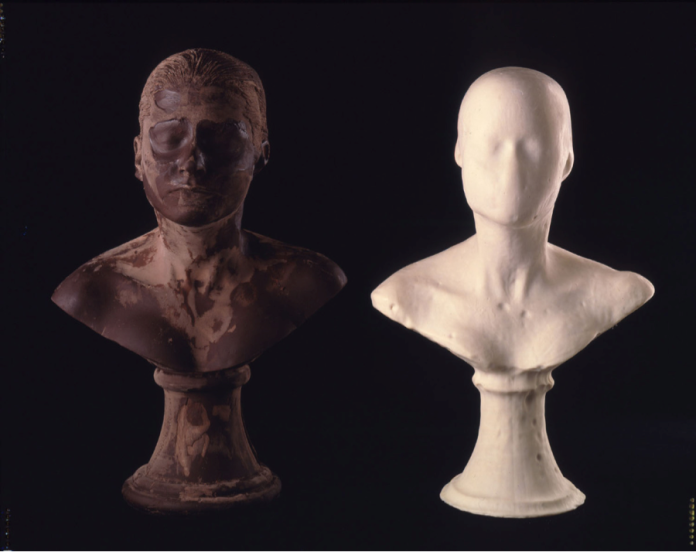
![Dieter Roth, P.O.TH.A.A.VFB (Portrait of the artist as a Vogelfutterbüste [birdseed bust], 1970. Multiple of chocolate and birdseed; ca. 9 x 6 x 4 inches (22.9 x 15.2 x 10.2 cm). Image courtesy artnet.](https://interventionsjournal.files.wordpress.com/2015/01/3.png?w=634&h=775)
![Janine Antoni, Lick and Lather, 1993 [at the Hirshhorn Museum at Sculpture Garden, Washington, D.C., 1999]. Chocolate and soap; 24 x 16 x 13 inches (60.96 x 40.64 x 33.02 cm). Image courtesy Luhring Augustine.](https://interventionsjournal.files.wordpress.com/2015/01/4.png?w=623&h=771)
![Janine Antoni, Lick and Lather, 1993 [at The New Museum, 2013]. Soap; 24 x 16 x 13 inches (60.96 x 40.64 x 33.02 cm). Image courtesy Jacinda Russell Art.](https://interventionsjournal.files.wordpress.com/2015/01/5.png?w=696)
You must be logged in to post a comment.